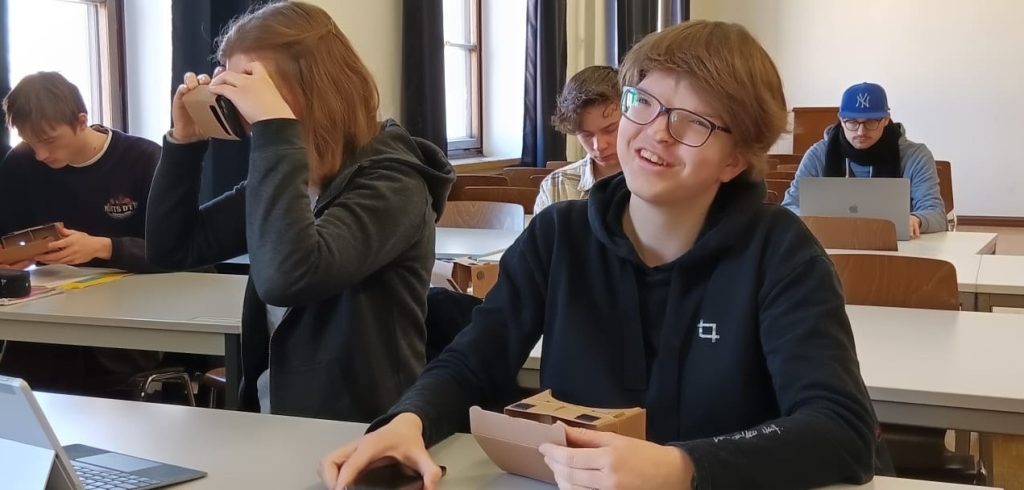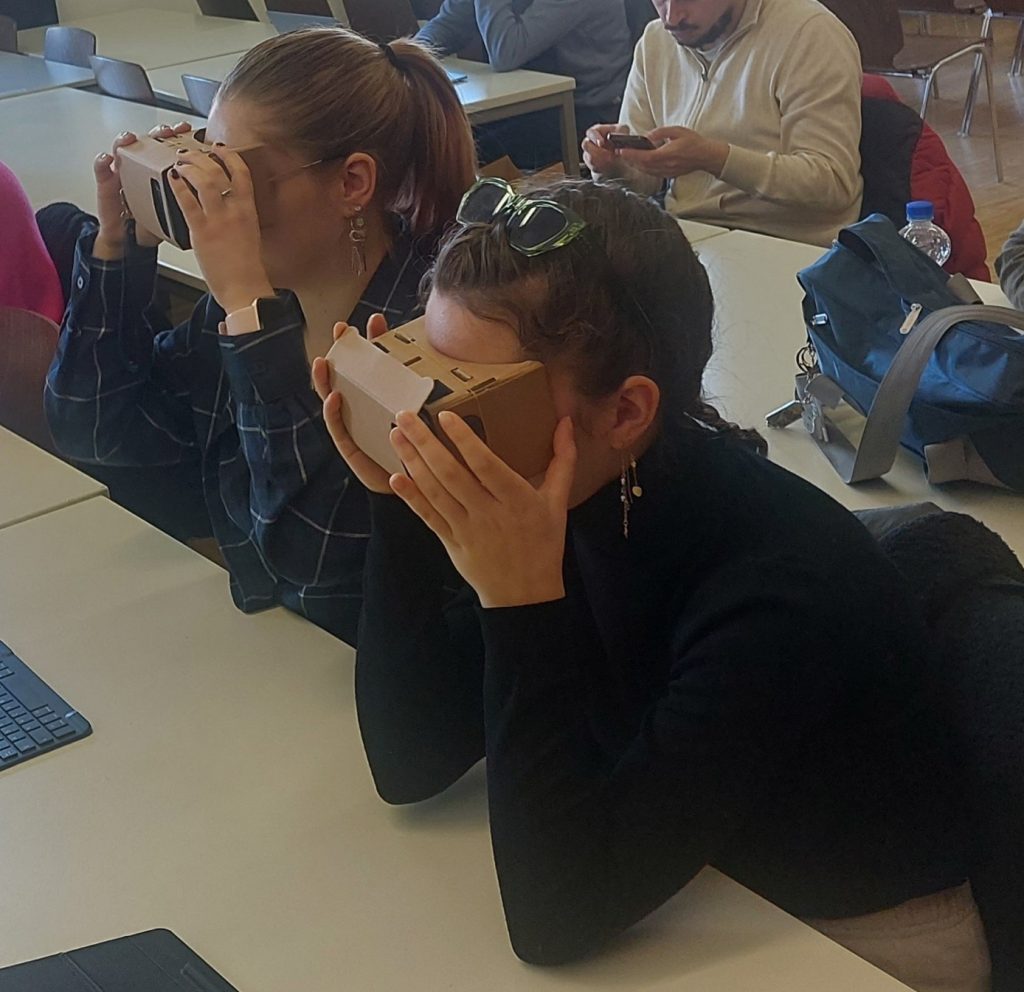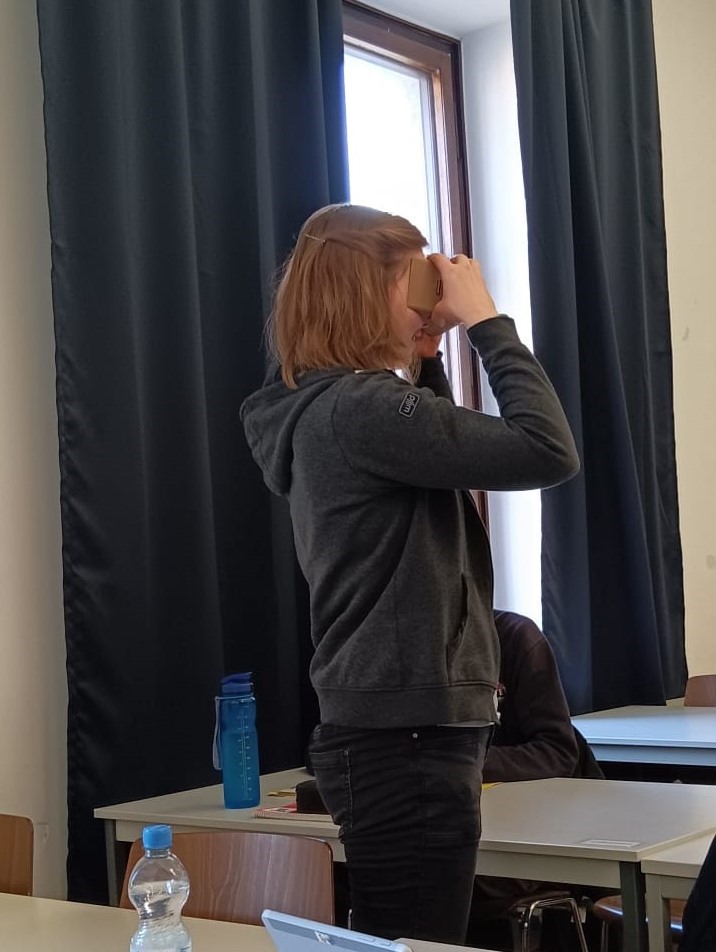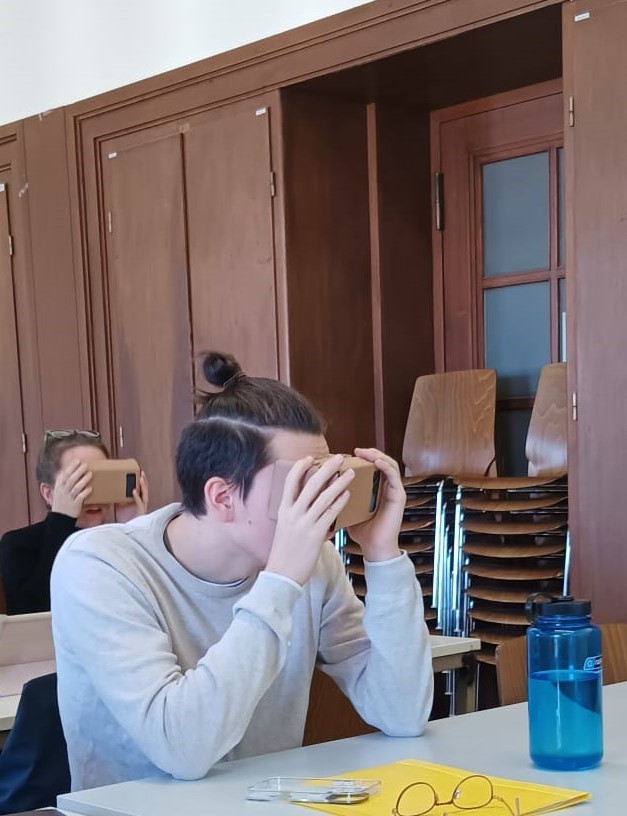This week we had a special teaching lesson – archaeological sites in VR – almost a real field trip to Egypt!
With the help of various digital models and 360-degree videos, the students were able to get a realistic picture of a huge variety of Egyptian sites and antiquities. Studying can be so much fun!
Thanks to recent digital developments, it is finally possible to get a good impression of temples and tombs, even outside of Egypt. In addition to the commitment of many colleagues and various large-scale projects (like the project of the factum foundation in cooperation with Basel University and the Egyptian Ministry of Antiquities), this development is a very positive outcome of the digitalization associated with the pandemic. Many 3D models are accessible free online and can be accessed using your own mobile phone, laptop or high-quality VR glasses (via YouTube, Matterport or Sketchfab, etc.).

In our class, we dared to experiment and integrate virtual reality into teaching Egyptology. And the happy faces show that it worked.
Digital models are particularly helpful for introductory courses to Egyptian archaeology. The impressive monuments can be seen in almost their full size, colour and shape. It is also possible to consider specific aspects in more detail based on the student questions. There are no longer any restrictions on the presentation of images.

After initial difficulties getting to grips with the cell phone settings and engaging with the virtual world, it soon became clear how easy it can be. A cardboard box, a mobile phone, an internet link and you’re ready to go. For all those who are unable to enjoy a VR experience due to visual impairment or vertigo, there was the option of viewing the 3D models on a laptop and joining without the 3D simulation in the virtual world. The variety of different models is huge. From the pyramids in Giza – inside or outside, to temples like Karnak or Abu Simbel, the tombs the Valley of the Kings, there is nearly no limit (e.g. Pyramids: https://www.youtube.com/watch?v=mOuvAJRknXk; https://my.matterport.com/show/?m=o5Ex5Xo7UkE; Karnak: http://www.aktiv-panorama.de/vr-touren/Karnak-Tempel_in_Luxor/; https://www.youtube.com/watch?v=VtI9debZPGU; Abu Simbel: https://matterport.com/discover/space/VxYAEMXh6dW; Tomb Ramses II https://ramsestheexhibition.com/3d-tomb/; Nefertari reconstruction: https://www.youtube.com/watch?v=PFAJcMzmMzQ).

By integrating the new technology into the syllabus, we hope to achieve the best teaching and learning results and offer students a fun immersive experience.


We hope to integrate new 3D models of the DiverseNile project in the future to enhance learning, teaching and archaeology.
